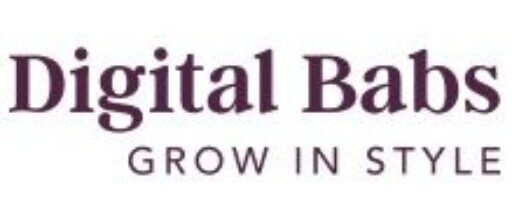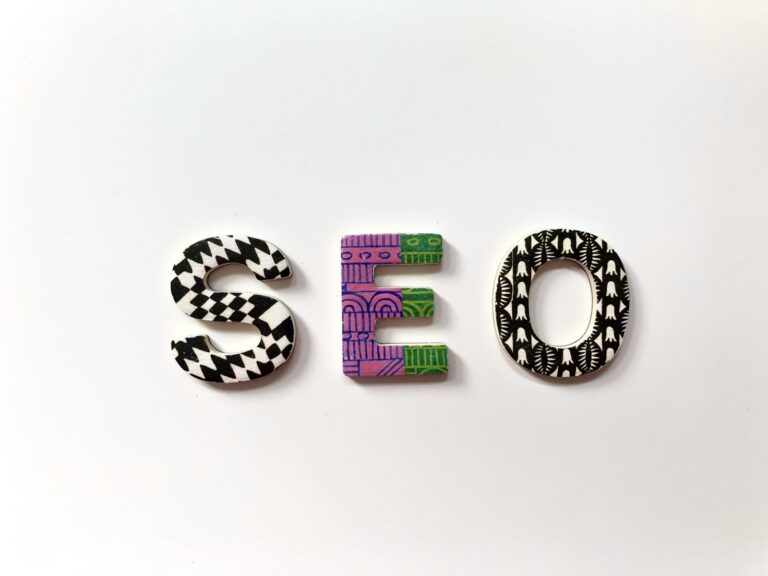E-commerce SEO Success: 10 Proven SEO Strategies to Boost Your Online Sales
In today’s digital landscape, standing out in the crowded e-commerce marketplace can feel overwhelming. With countless brands vying for attention, how do you ensure your online store not only attracts visitors but also converts them into loyal customers? SEO-the game-changing strategy that can propel your e-commerce business to new heights. By implementing proven SEO strategies, you can enhance your website’s visibility, drive organic traffic, and ultimately boost your online sales. Whether you’re a budding entrepreneur or a seasoned business owner, mastering these techniques is essential. In this article, we’ll explore 10 actionable SEO strategies tailored specifically for e-commerce success. Get ready to unlock the power of search engine optimization and turn your online store into a sales powerhouse!
Understanding the Importance of SEO in E-commerce
In the competitive world of e-commerce, search engine optimization (SEO) is a crucial tool that can make or break your online business. SEO is the practice of optimizing your website to rank higher in search engine results, thereby increasing the visibility of your online store. When done correctly, SEO can drive a significant amount of organic traffic to your site, which is essential for increasing sales without relying heavily on paid advertising. Understanding the importance of SEO is the first step toward leveraging its power to boost your e-commerce success.
In essence, SEO acts as a bridge between your products and potential customers. When a user types a query into a search engine, they are expressing a need or a desire. SEO ensures that your website appears in these search results, making it more likely that these users will visit your site. High rankings in search results not only increase visibility but also build trust and credibility with consumers. After all, users are more likely to trust and click on websites that appear on the first page of search results.
Moreover, SEO is not just about attracting any traffic; it’s about attracting the right traffic. By optimizing your website for specific keywords and phrases related to your products, you can target users who are actively searching for what you offer. This means that the visitors coming to your site are more likely to be interested in your products and, therefore, more likely to make a purchase. In this way, SEO plays a direct role in boosting your online sales and contributing to the overall success of your e-commerce business.
Keyword Research: Finding the Right Terms for Your Products
Keyword research is the foundation of any successful SEO strategy. It involves identifying the words and phrases that potential customers use when searching for products like yours. By targeting these keywords, you can optimize your website’s content to match what users are looking for, making it more likely that they will find your site in search results. Effective keyword research helps you understand your audience’s intent and align your SEO efforts with their needs.
To begin with, you need to brainstorm a list of keywords that are relevant to your products. Think about the terms that customers might use to describe your products, including variations and synonyms. You can also use keyword research tools like Google Keyword Planner, SEMrush, and Ahrefs to uncover additional keywords and analyze their search volume and competition. These tools provide valuable insights into how often specific keywords are searched for and how difficult it might be to rank for them.
Once you have a list of potential keywords, it’s important to prioritize them based on relevance, search volume, and competition. Focus on long-tail keywords, which are longer and more specific phrases that have lower search volume but higher conversion rates. Long-tail keywords are often less competitive and can attract highly targeted traffic that is more likely to convert into sales. By strategically incorporating these keywords into your website’s content, you can improve your chances of ranking higher in search results and driving more qualified traffic to your online store.
How to Find Low Competitive Keywords That Drive Real Traffic [2025 Guide]
On-Page SEO Techniques for E-commerce Websites
On-page SEO refers to the optimization of individual web pages to improve their search engine rankings and attract organic traffic. For e-commerce websites, on-page SEO is especially important because it helps search engines understand the content of your pages and determine their relevance to user queries. By implementing effective on-page SEO techniques, you can enhance the visibility of your product pages and improve the overall performance of your website in search results.
One of the key on-page SEO techniques is optimizing your page titles and meta descriptions. The page title is one of the first things that search engines and users see, so it’s important to include relevant keywords and make it compelling. Similarly, the meta description should provide a concise summary of the page’s content and include a call-to-action that encourages users to click through to your site. Both the title and meta description should be unique for each page and accurately reflect the content.
Another important aspect of on-page SEO is optimizing your headings and subheadings. Use H1 tags for the main heading of the page and H2 and H3 tags for subheadings. This not only helps search engines understand the structure and hierarchy of your content but also makes it easier for users to navigate your site. Including relevant keywords in your headings and subheadings can further enhance your on-page SEO efforts. Additionally, ensure that your URLs are clean and descriptive, incorporating keywords where appropriate to improve search engine visibility.
On-Page SEO Explained: Simple Steps to Boost Your Website in 2025
Optimizing Product Descriptions for Search Engines
Product descriptions are a critical element of your e-commerce website’s SEO strategy. They provide detailed information about your products, helping potential customers make informed purchasing decisions. However, product descriptions also play a significant role in search engine rankings. By optimizing your product descriptions for search engines, you can improve your site’s visibility, attract more organic traffic, and ultimately increase sales.
To optimize your product descriptions, start by incorporating relevant keywords naturally throughout the text. Avoid keyword stuffing, which can negatively impact the readability of your content and harm your search engine rankings. Instead, focus on creating engaging and informative descriptions that highlight the key features and benefits of your products. Use variations of your target keywords and include long-tail keywords to capture a wider range of search queries.
In addition to keywords, consider the overall length and structure of your product descriptions. Longer, more detailed descriptions tend to perform better in search engine rankings because they provide more value to users. Break up the text with bullet points, subheadings, and short paragraphs to make it easier to read. Include unique and original content for each product to avoid duplicate content issues, which can harm your SEO efforts. By providing valuable information and optimizing your descriptions, you can improve your product pages’ search engine rankings and attract more potential customers.
The Role of High-Quality Images in SEO
High-quality images are essential for any e-commerce website, as they provide a visual representation of your products and enhance the overall user experience. However, images also play a significant role in SEO. Optimizing your images can improve your site’s visibility in search results, drive more organic traffic, and increase the likelihood of conversions. By understanding the role of images in SEO and implementing best practices, you can maximize their impact on your e-commerce success.
One of the most important aspects of image optimization is using descriptive file names and alt text. Search engines rely on text to understand the content of images, so it’s crucial to include relevant keywords in your file names and alt text. The file name should be descriptive and include keywords related to the product. Similarly, the alt text should provide a concise description of the image, incorporating relevant keywords naturally. This not only helps search engines index your images but also improves accessibility for users with visual impairments.
In addition to file names and alt text, consider the size and quality of your images. Large, high-resolution images can slow down your website’s loading speed, which can negatively impact your search engine rankings and user experience. To optimize your images, compress them to reduce file size without sacrificing quality. Use image formats like JPEG and WebP, which offer a good balance between quality and file size. Additionally, create an image sitemap to help search engines discover and index your images more efficiently. By optimizing your images, you can enhance your site’s performance, improve search engine visibility, and provide a better experience for your customers.
Building an Effective Internal Linking Structure
Internal linking is a crucial aspect of SEO that involves creating links between different pages on your website. An effective internal linking structure helps search engines understand the hierarchy and relationship between your pages, making it easier for them to crawl and index your content. For e-commerce websites, internal linking can also improve user navigation, increase page views, and boost conversions. By strategically implementing internal links, you can enhance your site’s SEO performance and drive more organic traffic.
To build an effective internal linking structure, start by identifying the most important pages on your website, such as your homepage, category pages, and high-converting product pages. These pages should receive the most internal links, as they are critical to your site’s overall performance. Use descriptive anchor text that includes relevant keywords to link to these pages. This not only helps search engines understand the content of the linked pages but also provides users with clear context about what they can expect when they click on the link.
In addition to linking to important pages, consider creating a logical and intuitive navigation structure that guides users through your site. Group related products and categories together and use internal links to connect them. This not only improves the user experience but also helps search engines understand the relationship between different pages. Regularly review and update your internal links to ensure they remain relevant and functional. By maintaining a well-organized internal linking structure, you can improve your site’s SEO, enhance user navigation, and increase the likelihood of conversions.
Leveraging User-Generated Content for SEO Benefits
User-generated content (UGC) is any form of content created by customers, such as reviews, ratings, testimonials, and social media posts. Leveraging UGC can provide significant SEO benefits for your e-commerce website, as it adds fresh, unique content to your site and enhances user engagement. By encouraging and utilizing UGC, you can improve your search engine rankings, build trust with potential customers, and drive more organic traffic to your site.
One of the most effective forms of UGC is customer reviews. Positive reviews not only boost your credibility but also provide valuable content that can improve your search engine rankings. Encourage customers to leave reviews by offering incentives, such as discounts or loyalty points. Display these reviews prominently on your product pages, as they can help increase conversions by providing social proof. Additionally, respond to reviews to show that you value customer feedback and are committed to providing excellent service.
Another way to leverage UGC is by incorporating user-generated photos and videos into your product pages and social media channels. Encourage customers to share their experiences with your products by creating branded hashtags and running social media contests. This not only generates valuable content but also increases your brand’s visibility and reach. Additionally, user-generated photos and videos can provide authentic and relatable content that resonates with potential customers. By incorporating UGC into your SEO strategy, you can enhance your site’s performance, build trust with your audience, and drive more organic traffic.
Mobile Optimization: Ensuring a Seamless Shopping Experience
With the increasing use of smartphones and tablets, mobile optimization has become a critical aspect of e-commerce success. Ensuring that your website is optimized for mobile devices not only improves the user experience but also has a significant impact on your search engine rankings. Mobile-friendly websites are more likely to rank higher in search results, as search engines prioritize sites that provide a seamless experience across all devices. By focusing on mobile optimization, you can attract more mobile users, increase conversions, and boost your overall SEO performance.
To begin with, ensure that your website is responsive, meaning it automatically adjusts to fit different screen sizes and resolutions. A responsive design provides a consistent and user-friendly experience, regardless of the device being used. Test your site on various devices to ensure that all elements, including images, text, and navigation menus, are displayed correctly. Additionally, prioritize speed, as mobile users expect fast-loading pages. Use tools like Google PageSpeed Insights to identify and fix any issues that may be slowing down your site.
In addition to a responsive design and fast loading times, consider the overall user experience on mobile devices. Simplify your navigation menus and make it easy for users to find what they’re looking for. Use large, tappable buttons and ensure that forms are easy to fill out on smaller screens. Additionally, optimize your checkout process to be quick and straightforward, reducing the likelihood of cart abandonment. By providing a seamless shopping experience on mobile devices, you can improve your site’s performance, attract more mobile traffic, and increase conversions.
Utilizing Local SEO for E-commerce Success
Local SEO is the practice of optimizing your website to attract local customers and improve your visibility in local search results. For e-commerce businesses with a physical presence or those targeting specific geographic areas, local SEO can be a powerful tool to drive more traffic and increase sales. By focusing on local SEO, you can connect with local customers, build brand awareness in your community, and boost your overall SEO performance.
To begin with, create and optimize your Google My Business (GMB) listing. A GMB listing provides essential information about your business, such as your address, phone number, hours of operation, and customer reviews. Ensure that all information is accurate and up-to-date, and include relevant keywords in your business description. Encourage customers to leave reviews on your GMB listing, as positive reviews can improve your local search rankings and build trust with potential customers.
In addition to your GMB listing, optimize your website’s content for local keywords. Conduct keyword research to identify terms that local customers are using to search for products like yours. Incorporate these keywords naturally into your page titles, meta descriptions, headings, and content. Additionally, create location-specific landing pages if you have multiple locations or serve different geographic areas. These pages should provide detailed information about each location and include relevant local keywords. By optimizing your website for local SEO, you can attract more local customers, improve your search engine rankings, and increase sales.
Measuring SEO Success: Tools and Metrics to Track Your Progress
Measuring the success of your SEO efforts is essential to understand what’s working, identify areas for improvement, and make data-driven decisions. By tracking key metrics and using the right tools, you can gain valuable insights into your website’s performance and refine your SEO strategy for better results. Whether you’re just starting with SEO or looking to enhance your existing efforts, understanding how to measure SEO success is crucial for achieving e-commerce success.
One of the most important tools for measuring SEO success is Google Analytics. This free tool provides a wealth of data about your website’s traffic, including the number of visitors, their behavior on your site, and how they found you. Use Google Analytics to track metrics such as organic traffic, bounce rate, average session duration, and conversion rate. These metrics can help you understand how well your SEO efforts are driving traffic and engaging users.
Another valuable tool is Google Search Console, which provides insights into your site’s performance in search results. Use Google Search Console to track metrics such as impressions, clicks, click-through rate (CTR), and average position for your target keywords. This data can help you identify which keywords are driving traffic and which pages need improvement. Additionally, Google Search Console can alert you to any issues that may be affecting your site’s performance, such as crawl errors or mobile usability problems.
In addition to these tools, consider using SEO-specific tools like SEMrush, Ahrefs, and Moz to conduct keyword research, track rankings, and analyze your competitors. These tools provide detailed insights into your site’s SEO performance and can help you identify opportunities for improvement. By regularly monitoring key metrics and using the right tools, you can measure the success of your SEO efforts, make data-driven decisions, and continuously improve your e-commerce website’s performance.







